As a result of 2016 earthquake the 80 families who lived on the island of Portete, Ecuador were displaced to the mainland without any appropriate housing for the thermal conditions in the area. Materials of the area such as bamboo, wood, toquilla straw, and kade were replaced by zinc plates, blocks, and concrete. The traditional construction of the area whose materials are easily accessible, cheaper, and more sustainable have been stigmatized as low-quality materials. In this way, distancing the communities from accessing their own homes with traditional construction systems that are easily executed by having specialized labor in their family.
 Hand in hand with the community of Portete, Rama Studio has been working to reestablish the use of renewable materials from the area with low environmental impact. The intention of this project was to develop 3 types of bamboo housing responding to different sizes of families in the area, their economic capacity, and ease of execution to make it affordable. Open, flexible, and adaptable spaces were proposed. The central idea of the exercise was to develop homes with high thermal quality thatwill reduce the use of fans and air conditioning.
Hand in hand with the community of Portete, Rama Studio has been working to reestablish the use of renewable materials from the area with low environmental impact. The intention of this project was to develop 3 types of bamboo housing responding to different sizes of families in the area, their economic capacity, and ease of execution to make it affordable. Open, flexible, and adaptable spaces were proposed. The central idea of the exercise was to develop homes with high thermal quality thatwill reduce the use of fans and air conditioning.
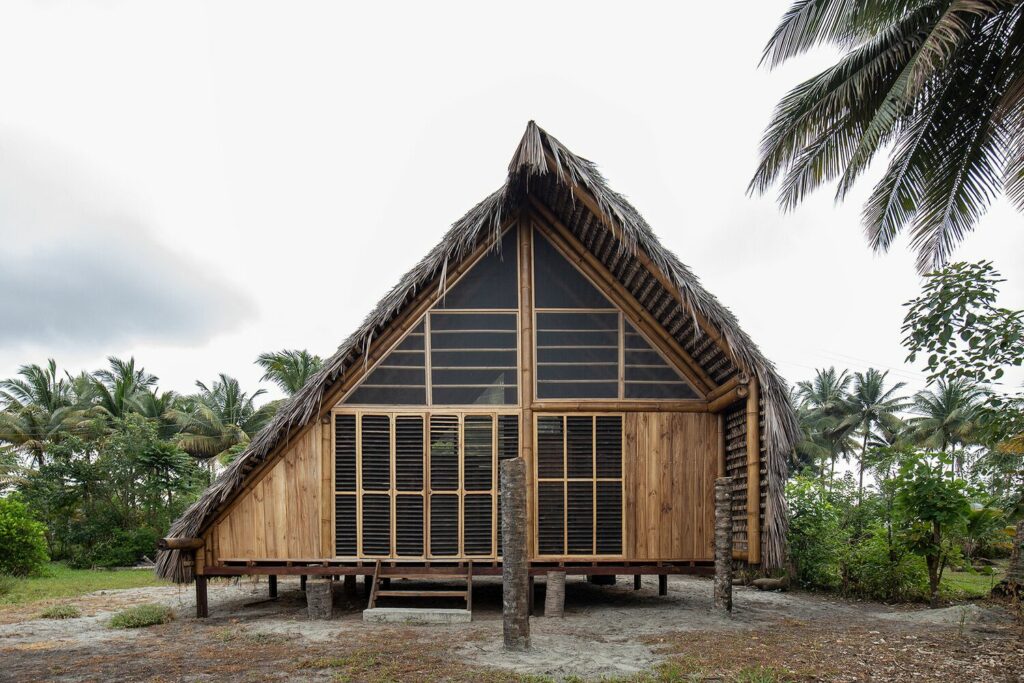 The first housing prototype Casa Toquilla M has 755 sq. ft. is a house to accommodate up to 8 people, and cost $16,000. It has a deck raised on piles, in response to possible flooding and durability of the material. People congregate outside to enjoy the breeze and the meeting space is associated with the food preparation space adjoining the patio for consumption.
The first housing prototype Casa Toquilla M has 755 sq. ft. is a house to accommodate up to 8 people, and cost $16,000. It has a deck raised on piles, in response to possible flooding and durability of the material. People congregate outside to enjoy the breeze and the meeting space is associated with the food preparation space adjoining the patio for consumption.
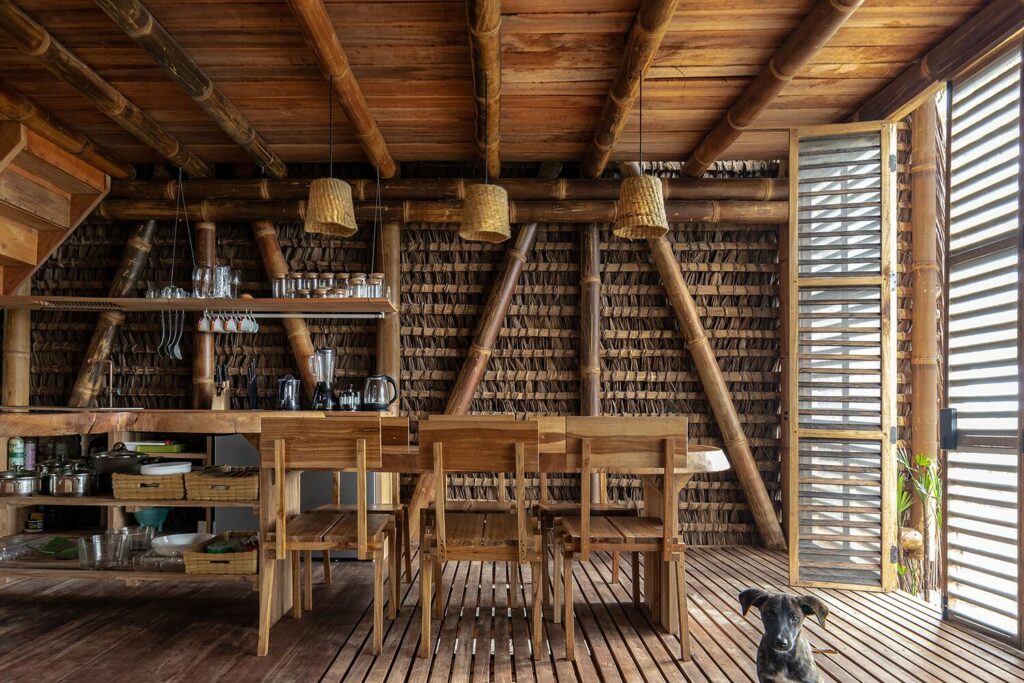 The spaces are open, generating a utility corridor that enhances cross ventilation throughout the house. A system of partitions that are resistant to weather and humidity is responsible for closing the house at night. No glass was required, but a mosquito net that attenuates the passage of wind at night, keeping it fresh. The air circulation system uses a wooden grid on the floor that allows cold air to pass through the shade of the house itself.
The spaces are open, generating a utility corridor that enhances cross ventilation throughout the house. A system of partitions that are resistant to weather and humidity is responsible for closing the house at night. No glass was required, but a mosquito net that attenuates the passage of wind at night, keeping it fresh. The air circulation system uses a wooden grid on the floor that allows cold air to pass through the shade of the house itself.
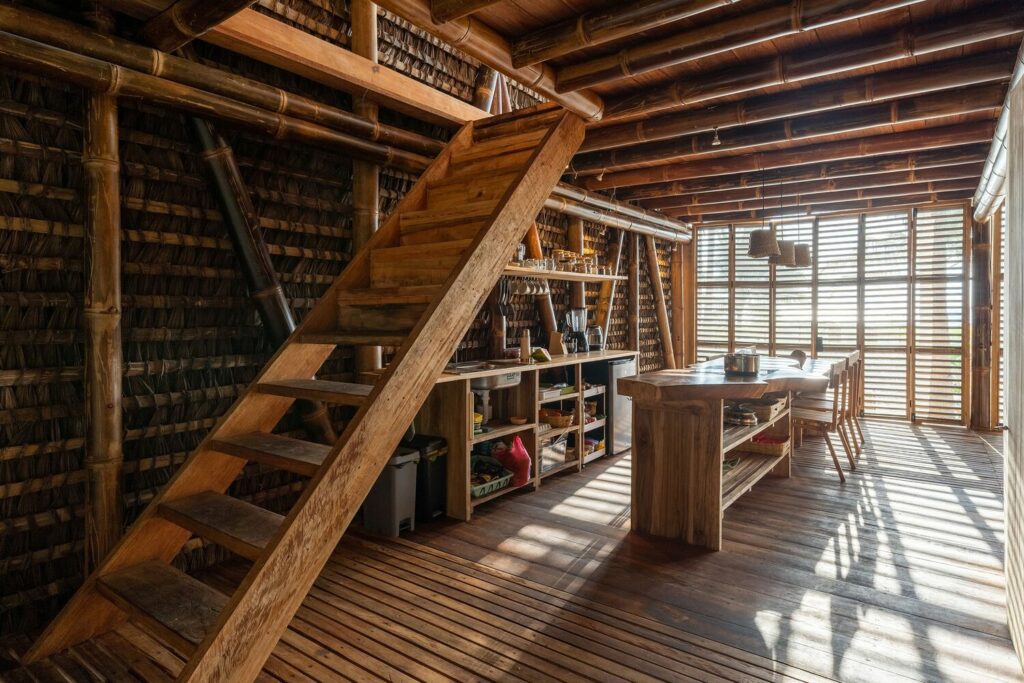 The second housing prototype Casa Toquilla L has 860 sq. ft. and a construction cost of $20,000. This house has one floor and is designed for families made up of elderly users or those with reduced mobility. The house accommodates up to 8 people. Unlike Casa Toquilla M, this one is compartmentalized into three spaces for privacy according to the family’s request. Two bedrooms and a common area also houses rest spaces.
The second housing prototype Casa Toquilla L has 860 sq. ft. and a construction cost of $20,000. This house has one floor and is designed for families made up of elderly users or those with reduced mobility. The house accommodates up to 8 people. Unlike Casa Toquilla M, this one is compartmentalized into three spaces for privacy according to the family’s request. Two bedrooms and a common area also houses rest spaces.
 The third housing prototype Casa Toquilla S, with 646 sq. ft., cost of $13,000 and is the smallest of the housing study trilogy. Ideal for 6 people, its distribution is similar to the toquilla M house, the exterior spaces on the second floor are eliminated, but the upper partition is fully opened to optimize space and have the same benefits as the balcony.
The third housing prototype Casa Toquilla S, with 646 sq. ft., cost of $13,000 and is the smallest of the housing study trilogy. Ideal for 6 people, its distribution is similar to the toquilla M house, the exterior spaces on the second floor are eliminated, but the upper partition is fully opened to optimize space and have the same benefits as the balcony.
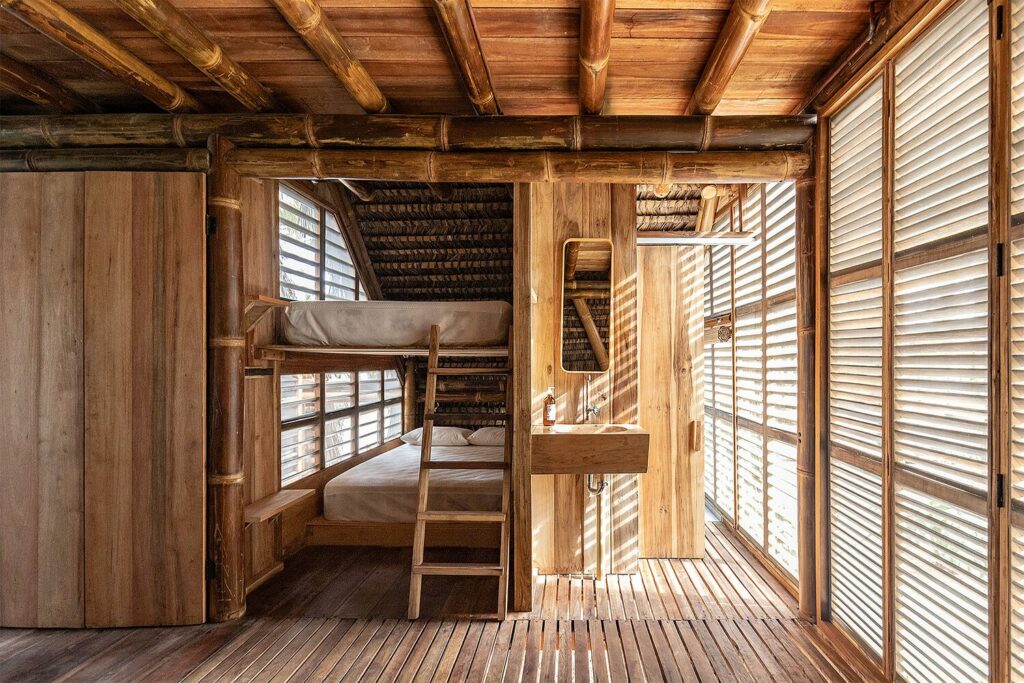 For the construction of the three housing prototypes, local labor was used, each house serving as a practical exercise to train the community in bamboo construction and toquilla straw weaving. Each home has its own sewage system through a biodigester, biological filters, and infiltration fields.
For the construction of the three housing prototypes, local labor was used, each house serving as a practical exercise to train the community in bamboo construction and toquilla straw weaving. Each home has its own sewage system through a biodigester, biological filters, and infiltration fields.
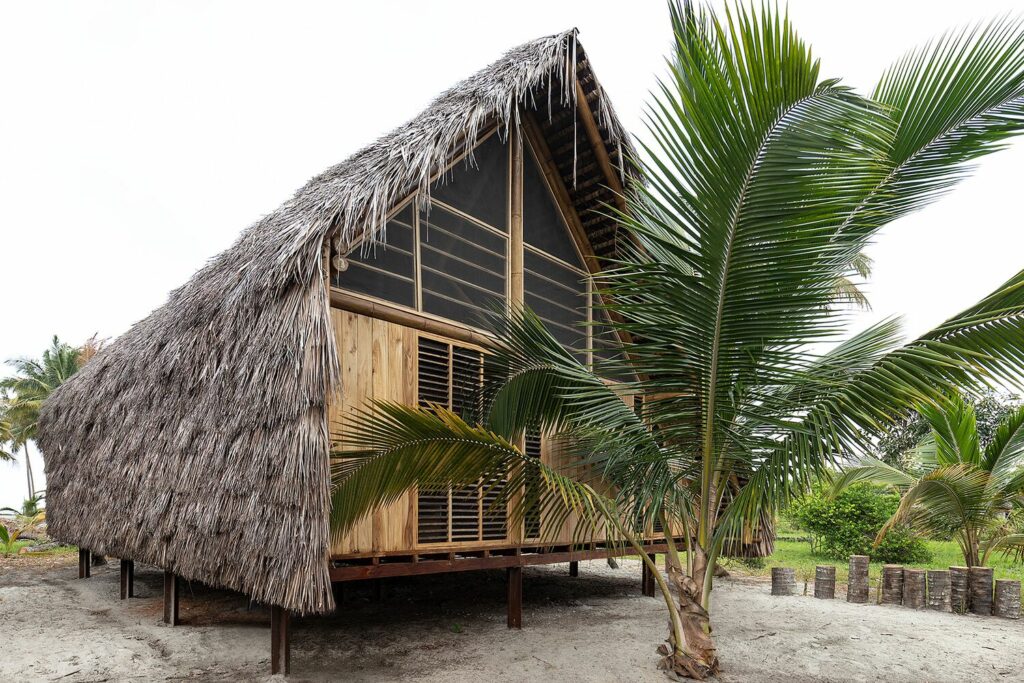 The houses were treated with different preservation and curing methods to evaluate their durability and to be able to carry out a real follow-up of the complications that the material may suffer in a humid and saline environment such as that of the coast. Only stainless steel was used for threaded rods, nuts, and washers. Reinforced cable was used for exteriors and all installation is conducted between the pieces drilling only in steps or for installation of outlets and switches, which were carefully selected to affect the Bamboo in the least way. For the final finish, after several tests, the material used was an oil based on beeswax, which protects the material from UV rays and water.
The houses were treated with different preservation and curing methods to evaluate their durability and to be able to carry out a real follow-up of the complications that the material may suffer in a humid and saline environment such as that of the coast. Only stainless steel was used for threaded rods, nuts, and washers. Reinforced cable was used for exteriors and all installation is conducted between the pieces drilling only in steps or for installation of outlets and switches, which were carefully selected to affect the Bamboo in the least way. For the final finish, after several tests, the material used was an oil based on beeswax, which protects the material from UV rays and water.
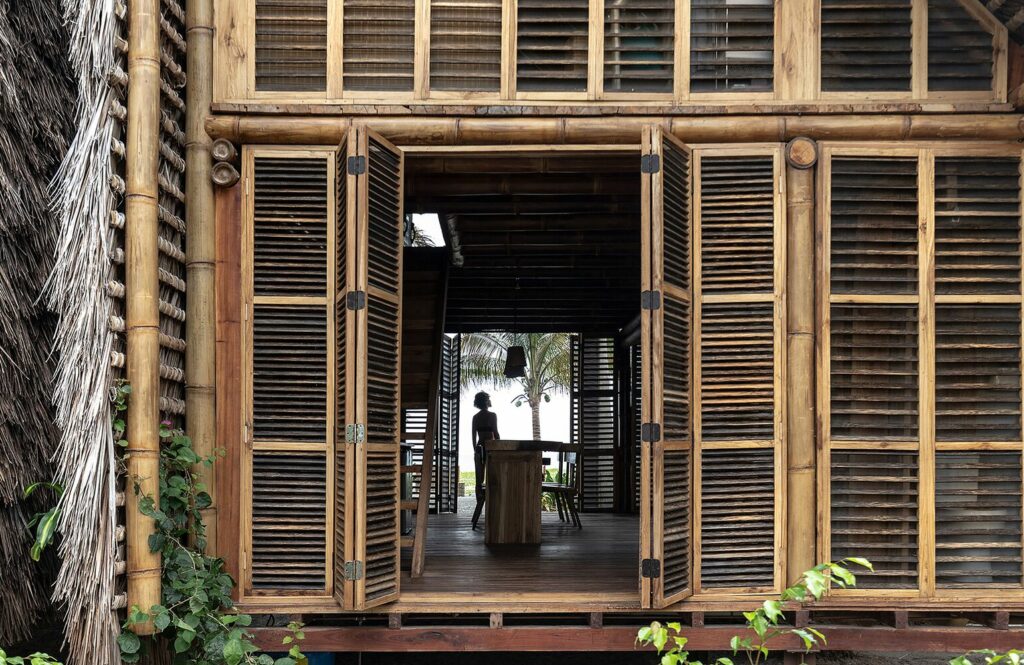 You can read the original article at www.archdaily.com
You can read the original article at www.archdaily.com


Beautiful!